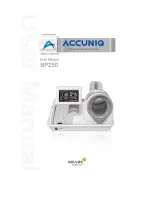
gen4-uLCD-XXPT - GETTING STARTED MANUAL
|
15
2.2
Standard Workshop4 has its capabilities to make a UI design, but a
richer and more interactive design can be achieved with Worskhop4
Pro. The Workshop4 PRO License unlocks Genie Magic for the ViSi-
Genie environment, along with the Smart Widget Editor for both ViSi
and ViSi-Genie Environment. New features and additions continue to
be developed, and updates are made available for free once the
license has been purchased.
Genie Magic
Genie Magic is an upgraded version of the standard ViSi-Genie
environment. With this advanced environment, the user can
overcome the limitation of the standard ViSi-Genie environment
which is its strictly drag-and-drop and event-adding type of
programming; while the code can be added using another
microcontroller (i.e. Arduino) interfaced to a 4D Systems display.
Genie Magic brings the ability to add standard 4DGL code to various
points within the ViSi-Genie environment. This enables you to have
all the advantages of ViSi-Genie but with the new ability to add extra
4DGL where you want it.
The Magic tab automatically appears once the Workshop4 Pro
License has been purchased.
Smart Widgets Editor
Smart Widget Editor brings a comprehensive tool which allows you to
create and animate Gauges, Sliders, Knobs and more, using the tools
provided. This allows you to easily add custom graphics and build
customised widgets, exactly as you want them.
Smart Widgets are custom widgets designed using the Smart Widgets
Editor and Workshop4 Pro comes with 30+ different examples of
smart widgets.
Note
: Workshop4 PRO is an
OPTIONAL
upgrade to unlock advanced features. Workshop4
is still FREE to download and use, however, the PRO features requires a paid license to
unlock the additional features. To know more about Workshop4 Pro and on how to
purchase the license, you may go to Workshop4 PRO product page.






































